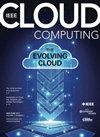Detecting Layered Bottlenecks in Microservices
Q1 Computer Science
引用次数: 3
Abstract
We propose a method to detect both software and hardware bottlenecks in a web service consisting of microservices. A bottleneck is a resource that limits the maximum performance of the entire web service. Bottlenecks often include both software resources such as threads, locks, and channels, and hardware resources such as processors, memories, and disks. Bottlenecks form a layered structure since a single request can utilize multiple software resources and a hardware resource simultaneously. The microservice architecture makes the detection of layered bottlenecks challenging due to the lack of a uniform analysis perspective across languages, libraries, frameworks, and middle-ware.We detect layered bottlenecks in microservices by profiling numbers and status of working threads in each microservice and dependency among microservices via network connections. Our approach can be applied to various programming languages since it relies only on standard debugging tools. Nevertheless, our approach not only detects which microservice is a bottleneck but also enables us to understand why it becomes a bottleneck. This is enabled by a novel visualization method to show layered bottlenecks in microservices at a glance. We demonstrate that our approach successfully detects and visualizes layered bottlenecks in the state-of-the-art microservice benchmarks, DeathStarBench and Acme Air microservices. This enables us to optimize the microservices themselves to achieve a higher throughput per re-source utilization rate compared with simply scaling the number of replicas of microservices.检测微服务中的分层瓶颈
我们提出了一种方法来检测由微服务组成的web服务中的软件和硬件瓶颈。瓶颈是限制整个web服务的最大性能的资源。瓶颈通常既包括线程、锁和通道等软件资源,也包括处理器、内存和磁盘等硬件资源。瓶颈形成分层结构,因为单个请求可以同时利用多个软件资源和一个硬件资源。由于缺乏跨语言、库、框架和中间件的统一分析视角,微服务体系结构使得分层瓶颈的检测具有挑战性。我们通过分析每个微服务中工作线程的数量和状态以及微服务之间通过网络连接的依赖关系来检测微服务中的分层瓶颈。我们的方法可以应用于各种编程语言,因为它只依赖于标准的调试工具。尽管如此,我们的方法不仅可以检测到哪个微服务是瓶颈,还可以让我们理解为什么它会成为瓶颈。这是通过一种新颖的可视化方法实现的,该方法可以一目了然地显示微服务中的分层瓶颈。我们证明了我们的方法在最先进的微服务基准、DeathStarBench和Acme Air微服务中成功地检测和可视化分层瓶颈。这使我们能够优化微服务本身,以实现更高的吞吐量/资源利用率,而不是简单地扩展微服务的副本数量。
本文章由计算机程序翻译,如有差异,请以英文原文为准。
求助全文
约1分钟内获得全文
求助全文
来源期刊

IEEE Cloud Computing
Computer Science-Computer Networks and Communications
CiteScore
11.20
自引率
0.00%
发文量
0
期刊介绍:
Cessation.
IEEE Cloud Computing is committed to the timely publication of peer-reviewed articles that provide innovative research ideas, applications results, and case studies in all areas of cloud computing. Topics relating to novel theory, algorithms, performance analyses and applications of techniques are covered. More specifically: Cloud software, Cloud security, Trade-offs between privacy and utility of cloud, Cloud in the business environment, Cloud economics, Cloud governance, Migrating to the cloud, Cloud standards, Development tools, Backup and recovery, Interoperability, Applications management, Data analytics, Communications protocols, Mobile cloud, Private clouds, Liability issues for data loss on clouds, Data integration, Big data, Cloud education, Cloud skill sets, Cloud energy consumption, The architecture of cloud computing, Applications in commerce, education, and industry, Infrastructure as a Service (IaaS), Platform as a Service (PaaS), Software as a Service (SaaS), Business Process as a Service (BPaaS)
 求助内容:
求助内容: 应助结果提醒方式:
应助结果提醒方式:


